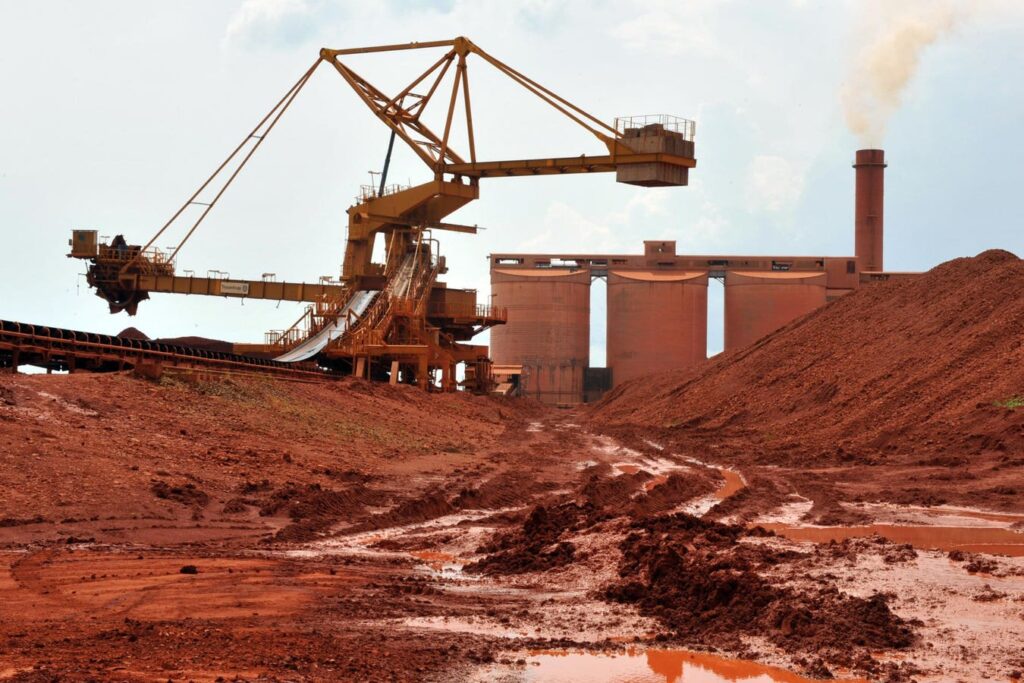A significant crisis is unfolding in the aluminium supply chain as the price of alumina, a crucial component in aluminium production, has surged to an unprecedented $645 per ton. This figure reflects nearly a doubling from the $330 per ton pricing at the end of the previous year, indicating severe pressures being faced primarily by Chinese aluminium producers. The escalating costs and shortages are underscored by difficulties in the first two stages of aluminium production. Alumina, or aluminium oxide, occupies a pivotal role in this three-part process. It starts with the mining of bauxite ore, which is then refined into alumina before being smelted into aluminium.
The situation is exacerbated by complications arising geographically, particularly in Guinea and Australia. Guinea is recognized as the leading exporter of bauxite, responsible for supplying approximately 70% of China’s bauxite imports. However, disruptions have arisen here due to a governmental dispute that has halted the shipments of a critical producer. Meanwhile, in Australia, the country’s production of bauxite and alumina has experienced setbacks triggered by stricter environmental legislation and a shortage of natural gas—a vital resource for refining processes. Notably, Alcoa has announced the closure of its oldest alumina refinery in Australia, while Rio Tinto has declared force majeure on one of its operations, highlighting the acute vulnerabilities across the supply chain.
In parallel, global demand for aluminium continues on an upward trajectory, with production nearing historic highs. Leading banks and financial institutions, such as Morgan Stanley and Citi, have noted that the strains within the aluminium supply chain are intensifying, especially as China grapples with its own challenges regarding domestic bauxite supply amidst fears over import dependencies. Morgan Stanley pointed to the inherent vulnerabilities in the supply chain, emphasizing that the suspension of exports from Guinea underscores the world’s dependency on this single region for bauxite, raising alarms about future supply stability.
Further compounding the issues, the decline in the quality of available bauxite ore within China is dramatically limiting its internal supply capabilities. The tightening of existing regulations relating to safety and environmental concerns exacerbates the difficulties faced by Chinese mining operations. Given that Guinea accounts for a staggering 70% of China’s bauxite imports, the current scenario suggests that unless substantial changes occur, Guinea will remain the decisive factor in bauxite supply moving forward.
Citi further illuminates the sobering reality in the alumina market, reporting continued ascendance in alumina prices and a record high of $645 per ton traded on the Shanghai Futures Exchange. This escalation poses potential long-term implications for aluminium pricing, as many smelters remain somewhat insulated from these price fluctuations through existing long-term alumina contracts. As alumina prices skyrocket, the alumina-to-aluminium price ratio has reached a six-year peak, indicating a significant imbalance that may force adjustments in the market dynamics going forward.
Traditionally, the aluminium production process has presented complexities primarily during the refining and smelting phases due to their considerable energy demands. The initial phase of bauxite extraction has generally been straightforward and uncomplicated. However, the current challenges spotlight a stark vulnerability: the heavy reliance on a singular major supplier for seaborne bauxite raises significant risks for the entire aluminium supply chain. With tightening environmental regulations and the weakening of domestic mining operations in key countries, the precarious nature of the aluminium industry is coming to the forefront, warning stakeholders of an increasingly uncertain future.

